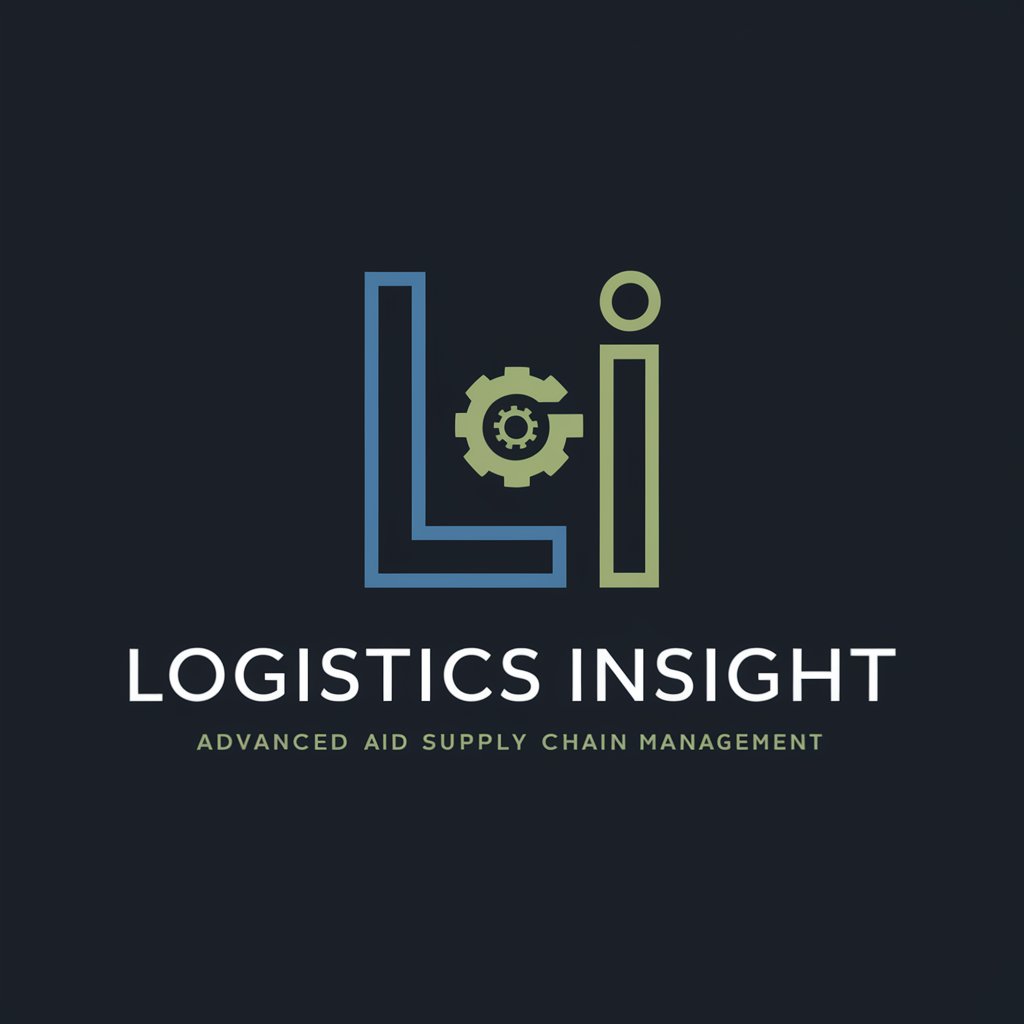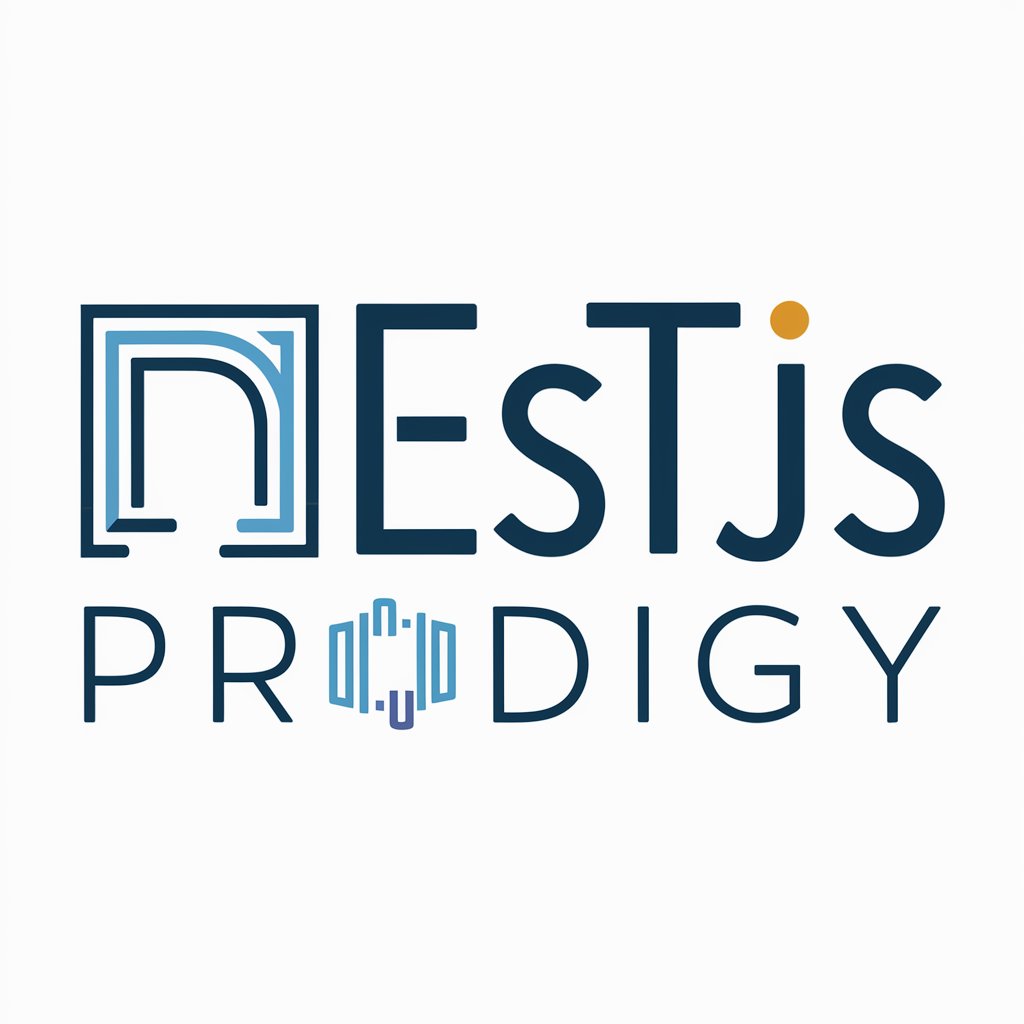Logistics Insight - Real-Time Logistics Insights

Welcome to Logistics Insight, your expert in logistics and supply chain management.
AI-Powered Supply Chain Solutions
Explain the impact of AI on modern supply chain management.
How can logistics companies improve their last-mile delivery?
What are the key challenges in global supply chain management?
Describe the benefits of using predictive analytics in logistics.
Get Embed Code
Introduction to Logistics Insight
Logistics Insight is a specialized GPT model tailored for the logistics and supply chain management sector. Designed to offer expert advice, innovative solutions, and a user-friendly experience, it targets professionals, students, and enthusiasts within this field. The model combines a comprehensive knowledge base in logistics with advanced natural language processing (NLP) skills, capable of deciphering complex terminologies and providing scenario-based problem-solving. Logistics Insight integrates real-time data and is compatible with various logistics software, enhancing decision-making processes. For example, it can interpret fluctuating market trends to recommend inventory adjustments or optimize route planning based on current traffic data. Powered by ChatGPT-4o。

Main Functions of Logistics Insight
Supply Chain Optimization
Example
Analyzing data to identify bottlenecks in the supply chain and recommending strategies to improve efficiency.
Scenario
A manufacturer struggling with delayed shipments can use Logistics Insight to pinpoint inefficiencies in their supply chain. By analyzing shipping schedules, warehouse operations, and transportation routes, the model suggests adjustments to reduce lead times and costs.
Inventory Management
Example
Using predictive analytics to forecast demand and adjust inventory levels accordingly.
Scenario
A retail chain facing overstock issues can leverage Logistics Insight to predict future product demand based on historical sales data, seasonal trends, and market analysis. This allows for more accurate inventory planning, minimizing excess stock and shortages.
Route Planning and Optimization
Example
Generating the most efficient transportation routes based on real-time traffic data, weather conditions, and delivery windows.
Scenario
A logistics company can use Logistics Insight to optimize delivery routes for its fleet, considering factors like traffic congestion, weather forecasts, and delivery priorities. This results in reduced fuel consumption, faster delivery times, and improved customer satisfaction.
Risk Management
Example
Identifying potential risks in the supply chain and proposing mitigation strategies.
Scenario
In the face of a potential strike at a major port, Logistics Insight can help a company assess the impact on its supply chain and explore alternative shipping routes or modes of transport to avoid disruption.
Ideal Users of Logistics Insight Services
Logistics and Supply Chain Professionals
Experts working in logistics and supply chain management can utilize Logistics Insight for data-driven decision-making, process optimization, and strategic planning. The tool's ability to analyze complex data and provide actionable insights is invaluable for improving operational efficiency and competitiveness.
Business Students and Academics
Students and academics in business, logistics, and supply chain disciplines can benefit from Logistics Insight as an educational tool. It offers real-world examples, fosters understanding of logistics concepts, and supports research with its comprehensive data analysis capabilities.
SME Owners
Small and medium enterprise (SME) owners can leverage Logistics Insight to streamline their logistics operations without the need for large teams of analysts. It offers cost-effective solutions for inventory management, route optimization, and risk management, helping SMEs compete more effectively in the market.

How to Use Logistics Insight
Initiate Free Trial
Begin by accessing yeschat.ai for an immediate start with Logistics Insight, offering a free trial without the necessity for login credentials or a ChatGPT Plus subscription.
Explore Features
Familiarize yourself with the tool's features, including real-time data integration, scenario-based problem solving, and cross-functional compatibility with logistics software.
Identify Use Case
Determine your specific need or challenge within logistics and supply chain management to leverage the tool's capabilities effectively.
Engage with the Tool
Utilize the tool for your identified use case, employing its advanced NLP skills for complex terminology and comprehensive knowledge base in logistics.
Review and Analyze
Evaluate the insights and solutions provided by Logistics Insight, and integrate them into your logistics or supply chain strategy for enhanced decision-making.
Try other advanced and practical GPTs
Paper Analyzer
Empowering Insight with AI-Powered Academic Analysis

HYBRD GPT
Empowering Hybrid Athletes with AI

Gift Guru
Find the perfect gift with AI

Blog Post Wizard
Elevate Your Blogging with AI

MyGod
AI-powered Scholarly Exploration of World Religions

Jane - Bittersweet Copywriter
Crafting Compelling Content with AI

Spadesinator
Elevate Your Spades Game with AI

I Am Stoic
Empower your life with Stoic insights and exercises.

Stable Diffusion提示词生成器
Crafting Visuals with AI Precision

Game Dev Helper
Empowering your game creation journey with AI.

Asesor experto en energía solar
Illuminate Your World with AI-Powered Solar Insights

NestJS Prodigy
Elevate Your NestJS Journey with AI-Powered Insights

Frequently Asked Questions About Logistics Insight
What makes Logistics Insight unique in the logistics and supply chain management field?
Logistics Insight stands out due to its integration of real-time data, scenario-based problem solving, and compatibility with existing logistics software, all powered by advanced NLP skills for handling complex logistics terminology.
Can Logistics Insight be used for educational purposes?
Absolutely, Logistics Insight serves as a powerful tool for students and educators in logistics and supply chain management, offering a comprehensive knowledge base and scenario-based learning opportunities.
How does Logistics Insight handle real-time data integration?
Logistics Insight seamlessly integrates real-time data into its analysis, providing users with up-to-the-minute insights and recommendations for logistics and supply chain decisions.
Is Logistics Insight suitable for small businesses?
Yes, Logistics Insight is designed to be scalable, offering valuable insights and solutions for businesses of all sizes, from startups to large enterprises.
Can Logistics Insight assist with global logistics challenges?
Yes, it is equipped to handle global logistics challenges, offering insights on international shipping, customs regulations, and global supply chain strategies.
